You can identify flannel by its soft, brushed texture and medium weight, usually between 5 to 20 oz./sq yd. Check for distinct patterns, like plaid or tartan, which are common in flannel fabric. Quality flannel feels fuzzy and is often made from cotton, wool, or blends. The weave should be loose yet durable, and well-defined patterns indicate good dye quality. Pay attention to how it drapes; the right flannel will maintain its shape and softness after washing. If you're curious about types and care for flannel, there's even more to discover.
Understanding Flannel Fabric
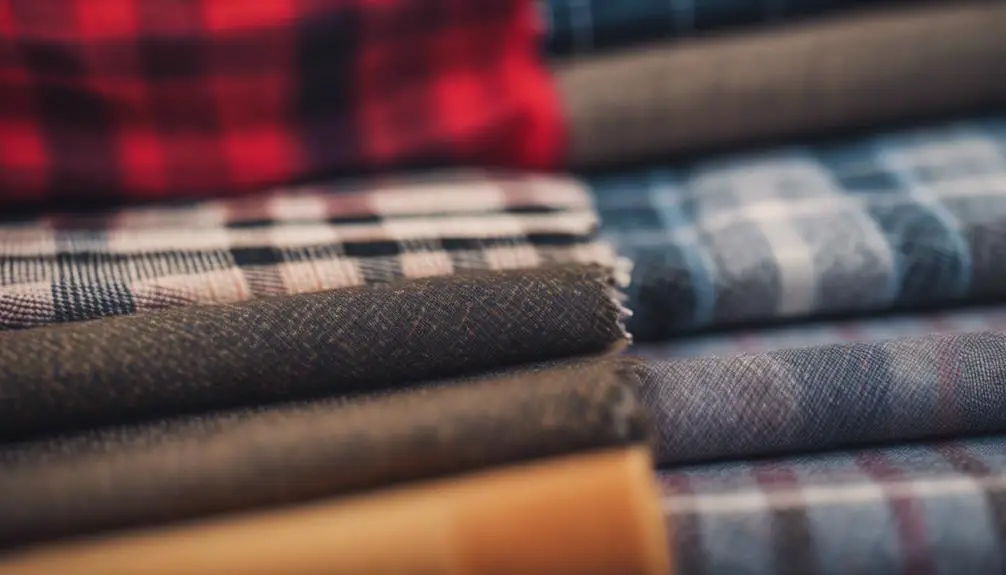
When you're looking for a cozy fabric to keep you warm, flannel is a top choice. This soft, medium-weight fabric is typically made from cotton or wool and is known for its napped finish, which enhances its warm and inviting texture. The napping process raises fine fibers from loosely spun yarns, resulting in that unmistakably soft texture you love.
To identify authentic flannel fabric, pay attention to its weight. Genuine flannel usually ranges from 5 oz./sq yd for cotton versions to heavier wool varieties that can hit 10-20 oz./sq yd. Heavier weights often indicate better durability and longevity, making them perfect for cold-weather clothing and bedding.
Additionally, modern flannel often showcases patterns like plaid or tartan, which adds a stylish touch to your wardrobe or home textiles. While you might come across flannel made from synthetic fibers, it's the natural cotton and wool varieties that truly embody the cozy essence of flannel. So, next time you're shopping, remember these characteristics to make sure you choose the best flannel fabric for your needs.
Types of Flannel
Flannel comes in various types, each catering to specific needs and preferences. One popular option is cotton flannel, known for its napped texture that provides warmth and softness. You'll often find it used in cozy plaid shirts, perfect for casual outings or layering during chilly days.
If you're looking for something lighter for children, baby flannel is your best bet. This soft fabric is designed specifically for kids' clothing, ensuring comfort and a gentle touch against the skin.
Another unique choice is Ceylons flannel, which blends wool and cotton. This combination gives it distinct properties, making it both warm and breathable, ideal for those who want high-quality flannel without compromising on comfort.
For practical uses, diaper flannel stands out. This stout cotton fabric, napped on both sides, is absorbent and incredibly soft, making it ideal for cloth diapers.
Whether you're dressing up in stylish plaid shirts or seeking comfort for little ones, understanding these types of flannel helps you make informed decisions for your fabric needs. Each type serves a purpose, ensuring there's something for everyone in the world of flannel.
Historical Background
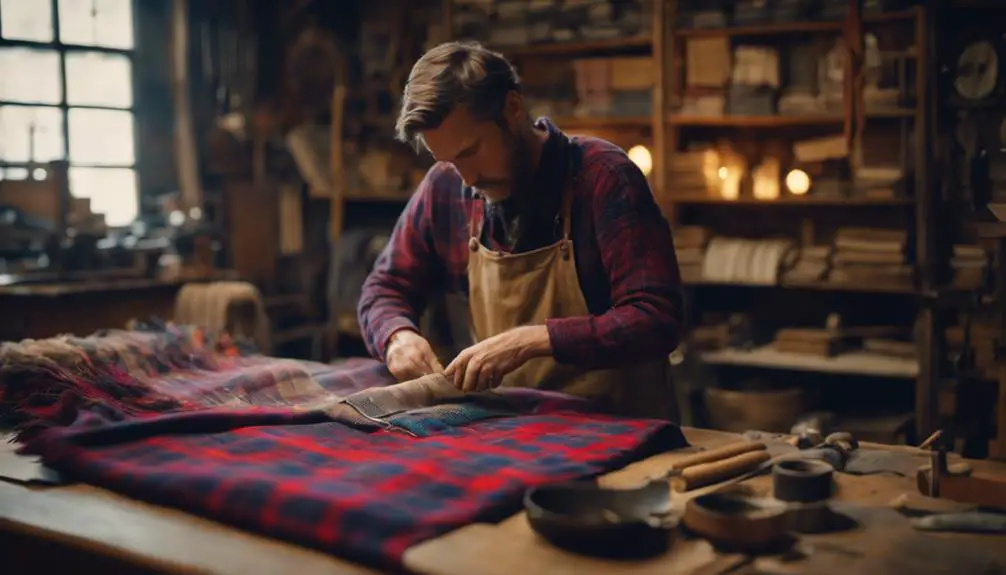
Tracing its roots back to 16th century Wales, flannel evolved from a woolen fabric into the versatile material we recognize today. Initially, flannel fabrics were primarily made from wool, but by the 20th century, cotton began to play a significant role in its production. The term "flannel" likely comes from the Welsh word for a type of woven fabric, and by the 17th century, it became popular across Europe.
By the 19th century, towns like Newtown and Llanidloes in Wales became hubs for flannel production, leading to its widespread use in various garments. The Industrial Revolution further boosted flannel production, making it more accessible to blue-collar workers in the United States. This marked a shift in how flannel was perceived; it was no longer just a fabric for the well-off but became a staple for everyday wear.
Today, modern flannel has expanded to include cotton and synthetic varieties, broadening its definition beyond traditional wool fabrics. This evolution highlights how flannel has adapted over the centuries, maintaining its relevance in wardrobes around the world.
Key Characteristics
The evolution of flannel has brought with it a set of defining characteristics that make this fabric unique. One of the most notable features is its soft, napped finish, which is achieved by brushing fine fibres from the fabric's surface. This not only adds texture but also enhances warmth, making flannel an excellent choice for cold-weather clothing and flannel sheets.
Here's a quick overview of some key characteristics:
| Characteristic | Description |
|---|---|
| Napped Finish | Soft texture, brushed fine fibres |
| Weight | Medium weight (5-20 oz./sq yd) |
| Material | Typically cotton fabric, wool, or synthetics |
| Weave Type | Loose weave, often twill or plain |
Flannel is often recognized for its distinctive patterns, like plaid and tartan, adding visual appeal to both casual and formal wear. The napping process can obscure the weave, enhancing its overall softness and comfort. Whether you're looking for cozy flannel sheets or stylish clothing, understanding these characteristics will help you identify genuine flannel.
Identifying Quality Flannel
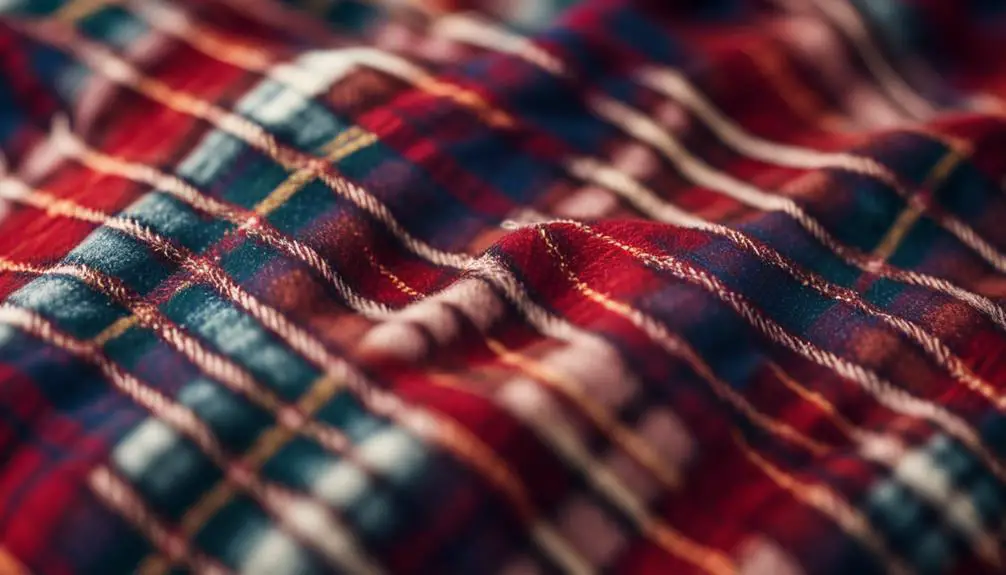
When shopping for flannel, knowing how to identify quality can make all the difference in your comfort and satisfaction. Start by checking the weight of the fabric; quality flannel typically ranges from 5 oz./sq yd to heavier options, indicating durability. A heavier weight contributes to the longevity of your flannel shirts, ensuring they'll last through many seasons.
Next, feel the texture. High-quality flannel should have a soft, fuzzy feel, thanks to the napping process that raises fine fibers from loosely spun yarns. This texture not only enhances comfort but also adds to the aesthetic appeal of the fabric.
Then, examine the thread count. A higher thread count usually means better quality fabric, which increases softness and reduces pilling. Look for well-defined patterns and vibrant colors that show minimal fading or running; this indicates better dye quality in the flannel.
Lastly, consider the fabric's shrinkage properties. Premium flannel is treated to withstand multiple washes without significant size reduction or loss of finish. By keeping these factors in mind, you'll be well-equipped to choose quality flannel that meets your needs.
Care and Maintenance
Caring for your flannel is straightforward, ensuring it stays soft and comfortable for years. To maintain its quality, always wash your flannel in cold water. This helps preserve its softness and prevents shrinkage during cleaning. When it comes to drying, opt for tumble drying on low heat. High temperatures can damage the fibers and alter the fabric's texture, so it's best to keep it gentle.
Flannel doesn't require ironing or dry cleaning, making it a low-maintenance option for your everyday use. You'll appreciate how easy it is to care for, especially since flannel fabric has natural wrinkle-resistant properties due to its knit characteristics. Over time, flannel actually softens with age, enhancing its comfort without compromising quality.
For the best results in care and maintenance, remember to avoid harsh detergents and bleach, as these can affect the fabric. By following these simple guidelines, your flannel items will remain cozy and inviting, ready to wrap you in warmth whenever needed. With just a little attention, your flannel will continue to provide you with comfort for many years to come.
Flannel in Fashion
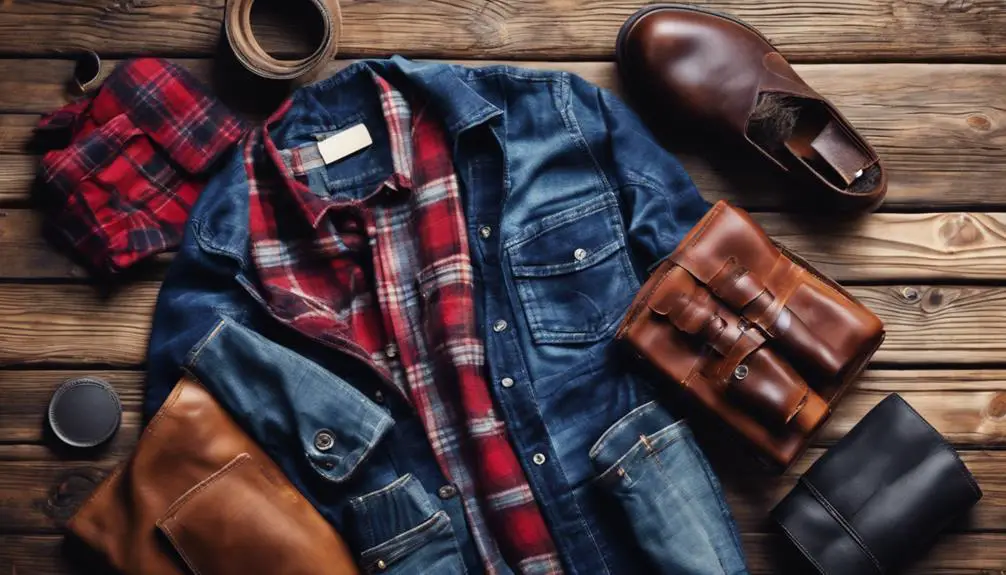
Flannel isn't just about comfort and warmth; it's also a staple in the fashion world. The soft, napped texture of flannel makes it an ideal choice for cold-weather attire, ensuring you stay cozy without sacrificing style. Traditional flannel shirts, often adorned with classic plaid patterns, have a timeless appeal that fits perfectly into casual and outdoor wardrobes.
In women's fashion, flannel dresses have gained popularity, offering versatility from high-waisted pants to skirts. You can dress them up or down, making them a go-to option for various occasions. Flannel suits are another stylish choice, providing a unique texture compared to traditional fabrics. These suits deliver a cozy yet polished look for winter formal events, keeping you warm while looking sharp.
The rich heritage of flannel traces back to Wales, and modern designs often reflect this history, with many styles named after Welsh towns. Whether you choose a classic flannel shirt or a trendy dress, incorporating this fabric into your wardrobe adds a layer of comfort and sophistication that is hard to beat. Embrace flannel's charm and make it a key player in your fashion lineup.
Environmental Considerations
The environmental impact of flannel fabric can vary widely based on the materials used, making it vital for consumers to choose wisely. When considering flannel, you'll find that cotton has a lower pollution rate compared to synthetic textiles. If you're aiming for sustainability, look for organic cotton flannel. This option reduces pesticide usage and promotes soil health, aligning with eco-friendly practices.
Wool, on the other hand, is the least polluting option overall. Its natural properties make it a sustainable choice, but it's important to confirm that the wool is sourced ethically. Ethical manufacturing practices play a significant role in enhancing the sustainability of flannel. By supporting brands that prioritize responsible sourcing and production, you contribute to reducing waste and pollution in the textile industry.
Certifications like the Global Recycled Standard (GRS) and Woolmark help you identify flannel that's produced responsibly. Being aware of unethical practices in textile production enables you to make informed decisions. Ultimately, your choices can support companies committed to sustainable and ethical practices, leading to a positive impact on the environment.
Recommended Brands
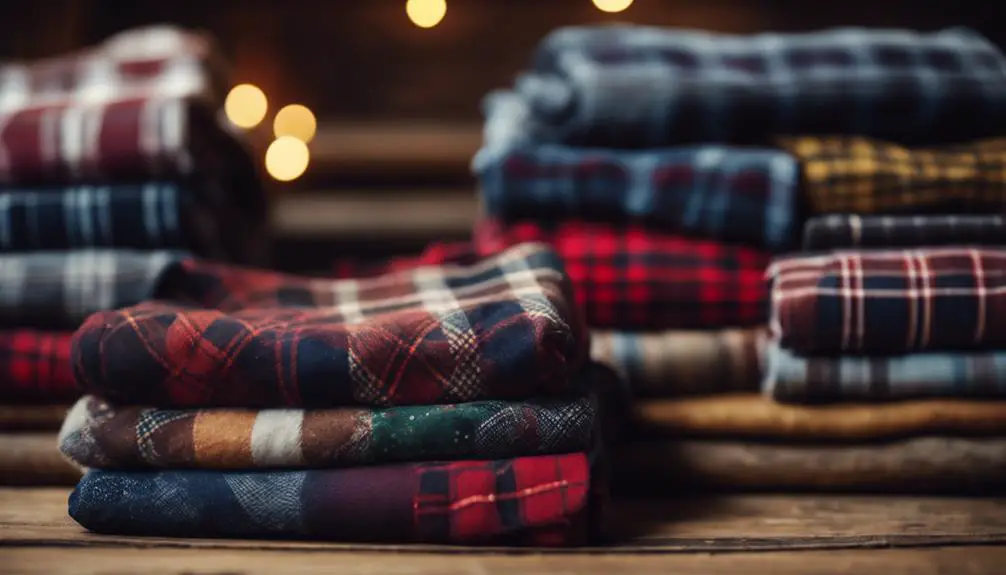
When you're on the hunt for high-quality flannel, consider exploring popular brands that have built a reputation for excellence. Maywood Studio is a standout, offering a wide range of flannel patterns and colors that cater to various tastes. If you're after unique designs and incredible softness, check out Holly Taylor Flannel, which is celebrated for its cozy fabrics.
Riley Blake Designs is another reputable brand known for vibrant prints paired with quality, making it a great choice for any project. Don't overlook Robert Kaufman Fabrics either; they provide a diverse selection of flannel options that are durable and suitable for both quilting and apparel. Fabric Traditions is also worth your time, especially if you need flannel that stands the test of time.
Before making a purchase, be sure to check customer reviews and ratings. This feedback can give you valuable insights into the fabric's quality, softness, and durability. Also, look for brands that offer prewashed or pre-shrunk flannel to help minimize shrinkage and maintain the fabric's integrity after multiple washes.
Frequently Asked Questions
How to Tell if Something Is Flannel?
To tell if something's flannel, run your fingers over the fabric and feel for a soft, napped surface. Check for weight, patterns, and a matte finish—these traits can help confirm its identity.
How Can You Tell the Difference Between Flannel and Fleece?
You can tell the difference between flannel and fleece by feeling their textures. Flannel's soft, brushed surface contrasts with fleece's thicker, plush feel. Also, consider breathability—flannel breathes better, while fleece traps more heat.
How Can You Tell if a Flannel Is Vintage?
To tell if a flannel's vintage, check the patterns, labels, and fabric weight. Feel the texture—it's usually softer and worn-in. Also, look for heavy-duty stitching, indicating quality craftsmanship typical of older garments.
Does Flannel Have a Right and Wrong Side?
Yes, flannel does have a right and wrong side. The right side feels softer and has a brushed texture, while the wrong side is flatter and coarser. Always use the softer side for your projects.
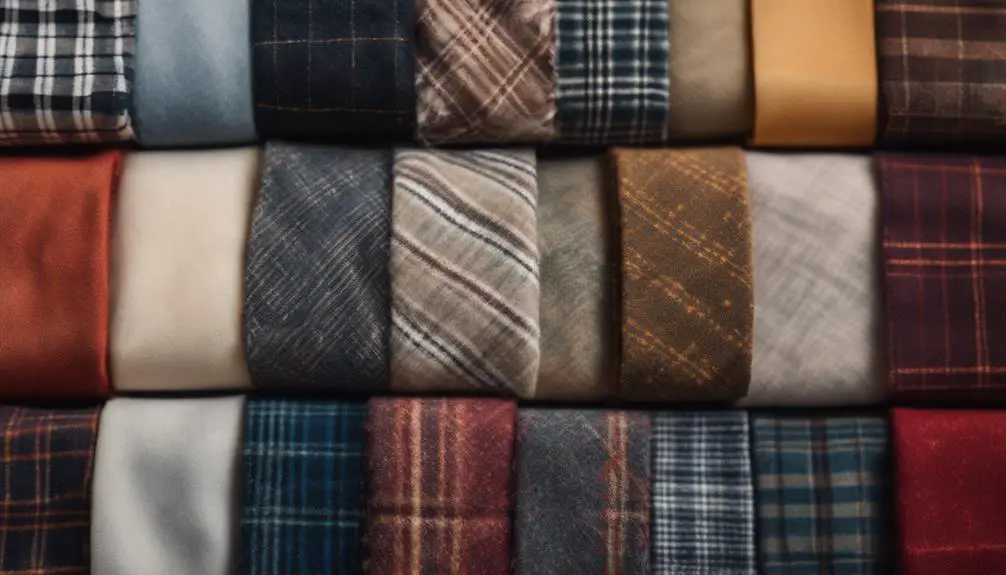

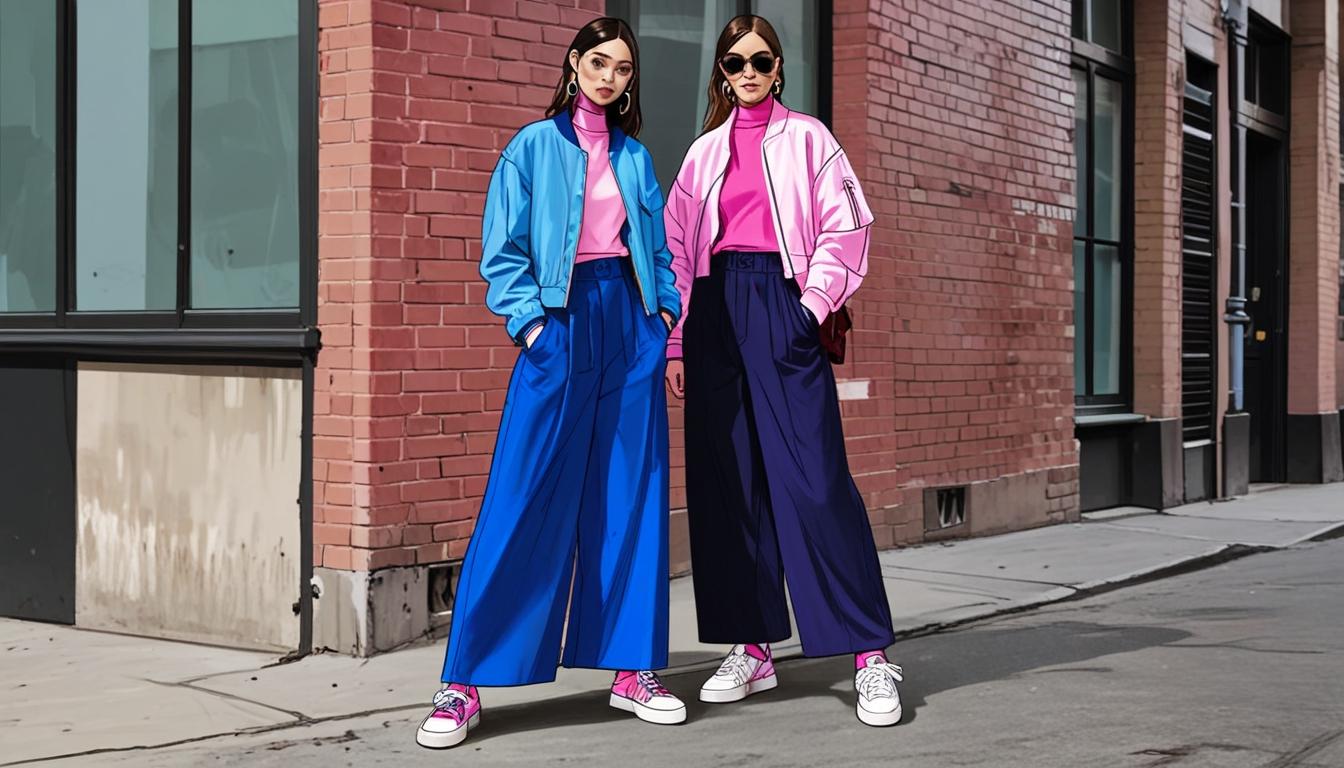


An interesting dialogue is worth comment. I believe that you need to write extra on this matter, it might not be a taboo topic but generally persons are not sufficient to talk on such topics. To the next. Cheers